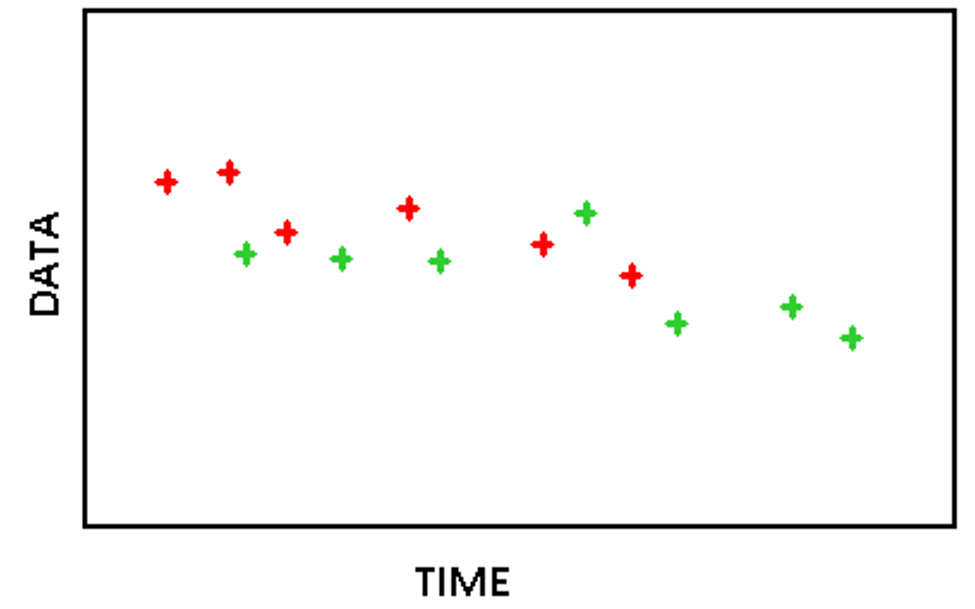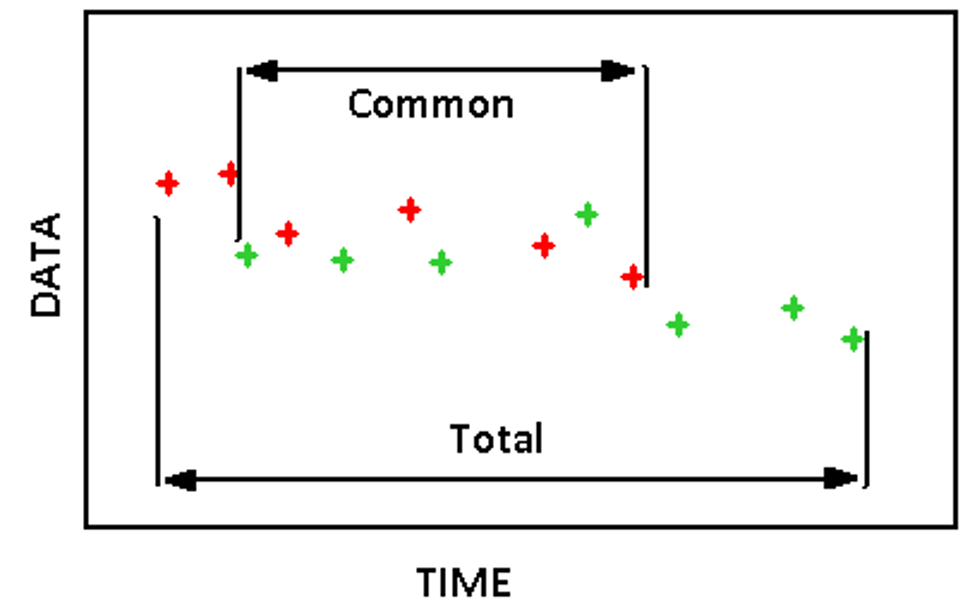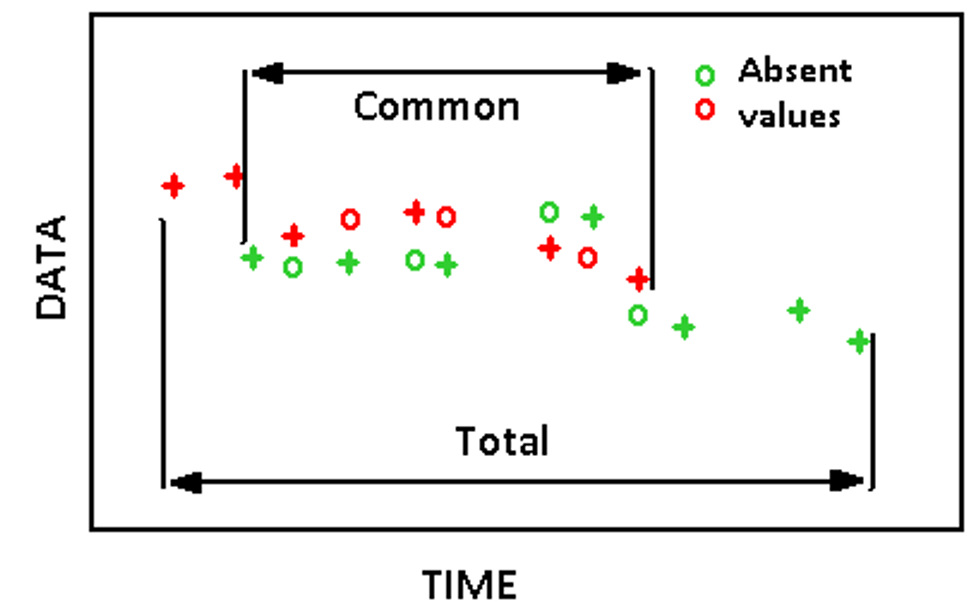Data Synchronization
Functions or User Tasks may have multiple data channel inputs, which may not be synchronized in time. In such instances, the data must be synchronized to a common time stamp before they can be processed.
Let us consider a function where two data channels at different time intervals are used:
 |
Time Range
The consequence of Time range selection will be on the treated interval If set to Common, only data in the common time interval will be processed i.e., where channel a AND channel b are present. If set to Total, the total time interval will be processed i.e., where channel a OR channel b are present.
 |
If the time range is set to Total, the missing data will be extrapolated.
 |
Extrapolation method
Users can select one of the following options for the Extrapolation method:
Set to 0.
Absent value: considered as absent value (see below).
Boundary value: equal to the limit value.
Slope value: respecting the last slope.
Absent Data Treatment
For the calculation both channel data must exist. If, at a certain time only data of channel a exist and of channel b is considered as Absent value, one value must be created:
 |
The absent values can also be replaced by created value in several ways:
Absent as result: left as absent value in the output channel.
Set to 0.
Previous value: kept equal to the previous value.
Next value: kept equal to the next value.
Average value: set equal to the average of the previous and next values.
Linear interpolation: linearly interpolated between the previous and next values.